The Yorkshire firm behind the royal fanfares
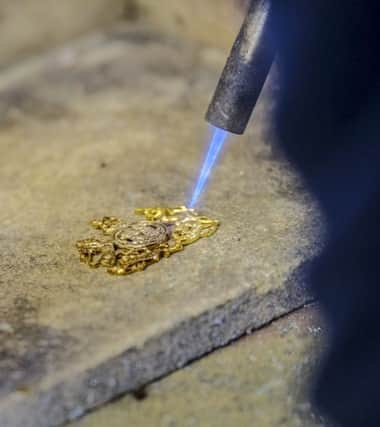

When our future king, Prince William, married Kate Middleton at Westminster Abbey in April 2011, the signing of the register was marked by a fanfare played by 28 trumpeters from the Central Band of the Royal Air Force on Smith-Watkins instruments.
When 91 musicians from seven different military units banded together on The Mall to set a new world record for the longest line of fanfare trumpeters, part of the celebrations for the Queen’s Diamond Jubilee in 2012, most of them were playing Smith-Watkins.
Advertisement
Hide AdAdvertisement
Hide AdAnd when Robbie Williams swaggered on stage to open the Diamond Jubilee concert outside Buckingham Palace just a few weeks later, he was flanked by trumpeters from the second battalion of the Coldstream Guards – all playing Smith-Watkins trumpets. They’re just a few of the entries on an extraordinary roll call of achievements – others include seeing their instruments played at the Grand National and the opening of the 2012 London Olympics – for a two-man team of makers based in the Ryedale village of Sheriff Hutton, near York.
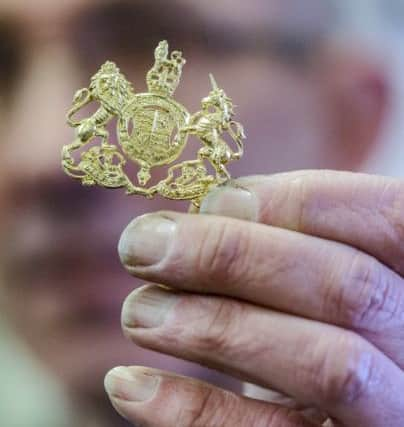

Richard Smith and Richard Wright are the men behind the brand and they are currently working on a set of 20 fanfare trumpets which have been commissioned by the Ministry of Defence to be used on royal and state occasions – and the pair are hopeful this will include the next royal wedding when Prince Harry marries Meghan Markle at Windsor Castle on May 19.
Solely for the use of the gold-jacketed State Trumpeters, who are selected from the Life Guards and the Blues and Royals and led by the Trumpet Major, the silver-plated instruments are embellished with bands of decorative sterling silver ribbon and are usually seen by the public decorated with banners lavishly embroidered in gold and silver thread.
What sets him apart from other brass instrument makers, Smith believes, is his dedication to researching the technology behind the sound. He’s actually Dr Smith, holder of an MPhil in the acoustics of woodwind instruments and a PhD in the acoustics of brass instruments.
Advertisement
Hide AdAdvertisement
Hide AdBorn in Bedfordshire in 1944, he didn’t have the most promising start, academically. “I was an eleven-plus failure,” he says. “But I managed to get loads of O-levels including metalwork and technical drawing, and various science subjects – physics was always my big love.”
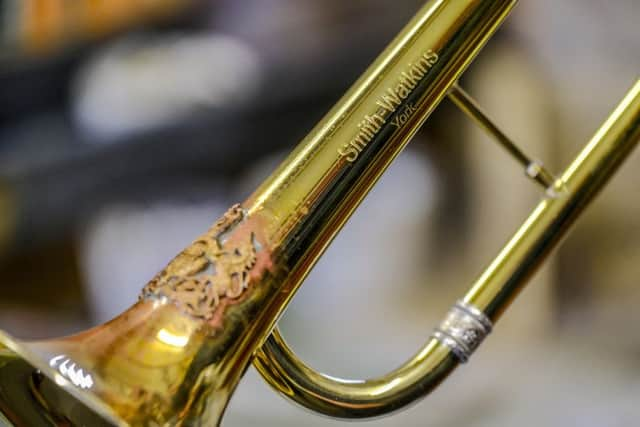

He’d always had a practical bent – as a young teenager in the mid-1950s he made his parents their own TV after “getting hold of a tube and various other bits and pieces”.
“And I was into crystal sets. I can remember listening, very late at night, on a set of headphones to boxing matches being broadcast from America.”
He then went on to do an HND course in applied physics, which involved a placement at the Marconi Company and “a lot of electronics and metal work – soldering, bending, forming, shaping, painting – all of which has fed into what I do today”.
Advertisement
Hide AdAdvertisement
Hide AdTeacher training at the then St John’s College, York, was followed by a short period teaching physics, then the master’s and the doctorate. The latter involved some work with Boosey & Hawkes – at the time major manufacturers of musical instruments – and when the PhD was in the bag, the company offered him a job as its chief designer of brass instruments.
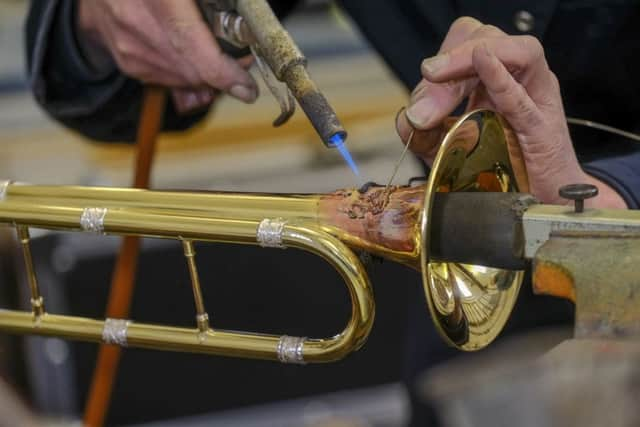

In 1985, he took redundancy and, with the princely pay-off of £2,000, set up his own business at his north London home making instruments from his kitchen table.
“It was a big risk,” he says now. “But at Boosey & Hawkes, I’d met Derek Watkins, who was wonderful: one of the top trumpet players of the day. He worked with me in an advisory capacity, testing every one of my designs, until his death in 2013.” Derek is still remembered in the brand name that’s stamped on every instrument to leave the Richard Smith (MI) Ltd workshops – Smith-Watkins.
By 2005, the Smiths’ home was overflowing. “I’d put a shed out in the garden, then a second one. There were instruments all over the dining room, and even the roof space was full of packaging materials.”
Advertisement
Hide AdAdvertisement
Hide AdRichard had always loved North Yorkshire – his grandfather was a Methodist minister who travelled the world and ended up in Hovingham – and when his wife, Deborah, a biochemist, spotted an opening at the University of York, where she’s now pro-vice-chancellor for research, the deal was done.
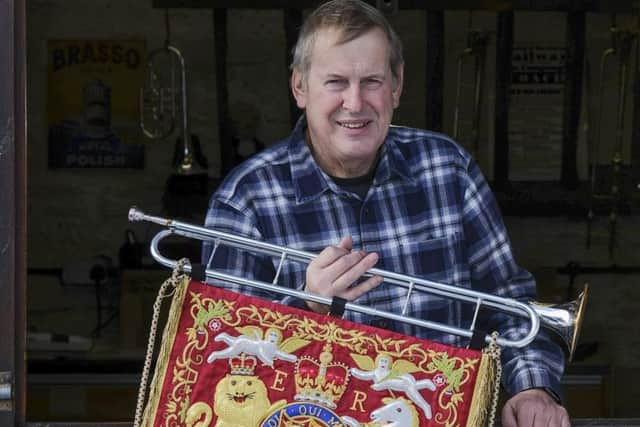

The couple bought their home, a former farm on the edge of Sheriff Hutton, and Richard converted the cowshed into a workshop.
“And that’s led to a fair few ‘where there’s muck, there’s brass’ headlines,” he laughs.
He was joined by the second Richard about a decade ago – a bit of serendipity brought the two together when Smith heard that Wright, living nearby, had once worked for Paxman Musical Instruments, a London specialist in French horns. A trained French horn player himself, Wright now plays the cornet in the Kirkbymoorside Town Band and spends most of his time in the workshop.
Advertisement
Hide AdAdvertisement
Hide AdThat leaves Smith free to pursue his first love – research. He’s happiest in his “trumpet laboratory”, undertaking groundbreaking research into the acoustics of brass instruments – all the more remarkable when you consider that the trumpet has been around for thousands of years, and we’re still learning about it.
Fanfare trumpets are usually “natural” trumpets, that is, a tube without valves in which the air column resonates to play a set of perhaps just six notes, depending on the skill of the player.
Thirteenth-century British examples show that these were simple, straight tubes and could be as much as six-feet long: cumbersome to say the least and difficult to play while, say, riding a horse.
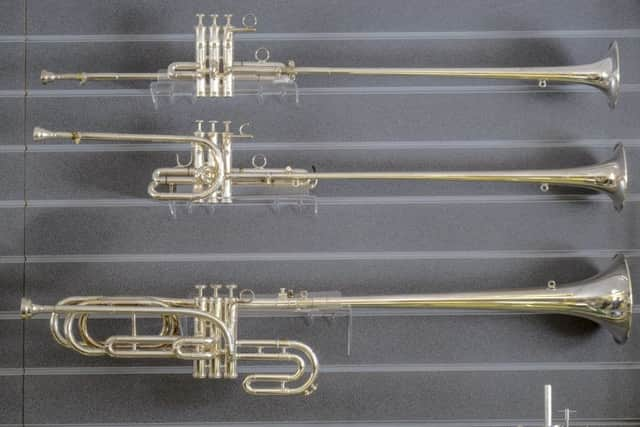

Better technology in the 14th century allowed the tubing to be bent into the familiar paper-clip shape that we know today, making them more manageable in action, and it’s this version that prevails today, although there are Smith-Watkins versions of the less familiar, valved “coronation” fanfare trumpet, designed for the Coronation of King George Vl in 1937.
Advertisement
Hide AdAdvertisement
Hide AdThe firm doesn’t just make fanfare trumpets – £2,000 to £8,000 will buy the symphonic or jazz player a similarly fabulous handmade instrument. And yet Smith doesn’t play a brass instrument himself – he’s a bassoonist, and has had stints with the Salomon Orchestra, widely considered to be London’s finest non-professional orchestra, and has played alongside the much-loved organist and director of music at York Minster, Francis Jackson.
“It’s the embouchure,” he says, pursing his lips to demonstrate. “It’s completely different – I just can’t do it!”
For more information on Richard Smith (MI) Ltd and his Smith-Watkins instruments go to www.smithwatkins.com